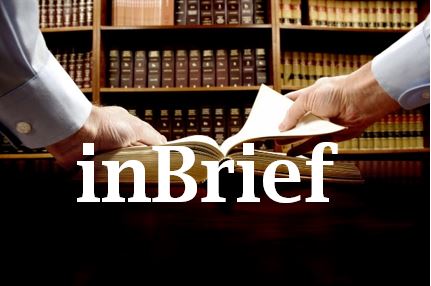The new UAE Bankruptcy Law
Afridi & Angell inBrief
November 2016
Overview
The new Bankruptcy Law of the UAE was enacted on September 20, 2016 as Decree-Law No. 9 of 2016. It was published in the Federal Official Gazette on September 29, 2016, giving it an effective date of December 31, 2016. The new Bankruptcy Law replaces and repeals the previous legislation on the subject, Book 5 of the Commercial Code, which was seldom used in light of its perceived shortcomings. Perhaps the most important new feature of the new Law is the introduction of a regime that allows for protection and reorganization of distressed businesses.
Certain key features
- The current law relating to insolvency has been repealed.
- Coverage is different; many entities covered by the previous law are not covered by the new Law, while the new Law covers many entities that were not covered before.
- The Financial Restructuring Committee has been established.
- A debtor can seek court protection and assistance while it agrees to a financial arrangement with its creditors without having to proceed to bankruptcy proceedings (“preventive composition”).
- A creditor (or group of creditors) must now have a debt owed of at least AED 100,000 before it can initiate bankruptcy proceedings.
- The Penal Code provisions on non-fraudulent bankruptcy have been repealed.
- Criminal proceedings relating to “bounced” cheques will be suspended for the duration of the preventive composition or restructuring procedures.
- A debtor can raise new finance during the preventive composition or restructuring process, with court approval.
Who does the New Bankruptcy Law apply to?
Article 2 of the new Bankruptcy Law provides that it shall apply to:
- Private sector companies:
- All companies governed by Federal Law No. 2 of 2015 on Commercial Companies (the “Companies Law”);
-
- Businesses established in the Free Zones, except for the Financial Free Zones (the Dubai International Financial Centre and the Abu Dhabi Global Market), which have their own rules on bankruptcy; and
-
- Licensed civil companies conducting professional activities.
- Public sector companies:
- Companies wholly or partially owned by the federal government or an Emirate government whose founding statutes or constitutive and governing documents provide that they shall be subject to this Law.
- Individuals:
- Traders.
These are significant changes. Civil companies were generally viewed as falling outside the previous law, since they engaged in “civil” as opposed to “commercial” activities. But in contrast, the public sector is now almost completely exempt from the new Bankruptcy Law, unless and until a public sector company undertakes the amendment of its founding statute or constitutive and governing documents so as to make it subject to the new Bankruptcy Law. Coverage did not change as regards sole to proprietorships; traders who were engaged in business as sole proprietorships were subject to the previous law (although this was not generally appreciated) and are subject to the new Bankruptcy Law.
Some Key Features of the New Bankruptcy Law
The Financial Restructuring Committee
Article 4 provides that the Financial Restructuring Committee will be responsible for:
- the supervision of financial restructuring procedures of financial institutions so that the debtor’s arrangements with its creditors can be appropriately agreed and managed;
- the accreditation of experts involved in financial restructuring and bankruptcy dealings and establishment of fees and costs payable for their services;
- the establishment and maintenance of a register for persons against whom judgments under this Law are made;
- reporting to the Minister of Finance on the work carried out by the Committee, results achieved and any actions it proposes; and
- any other tasks prescribed under this Law or by the UAE Cabinet.
Debtor-creditor agreement – preventive composition
Rather than having to proceed directly (or at all) to bankruptcy proceedings, preventive composition will afford the debtor the opportunity to reach an agreement with its creditors for the repayment of sums owed (Article 5), while under court protection from individual creditor claims. This option will be available to the debtor only if it has not been in default for more than 30 consecutive business days and is not insolvent (Article 6(2)). The debtor will not be able to dispose of any property, stocks or shares, make any borrowings, or (if a company) change ownership or corporate form (Article 31(1)) whilst it is undergoing this process.
Application
The application must include, among other things, a description of the debtor’s economic and financial position; details of its movable and immovable properties, employees and creditors; and cash flow and profit and loss projections for the 12 months following the date of application (Article 9).
Debtor obligations
The debtor must continue to perform its obligations under any contract, provided the Court has not issued a judgment of stay of execution due to the debtor’s failure to perform its obligations (Article 34(1)). The trustee designated to facilitate the preventive composition process does have the right to request the Court to rescind any contract if that is in the best interests of the debtor and its creditors and provided that it does not substantially harm the other contracting party’s interests (Article 34(2)).
Appointment and obligations of the trustee
The Court will appoint one to three trustees as designated by the debtor or appoint an expert or other person (if more appropriate) (Article 17(1) and (2)).
The trustee will be obliged to publish in two daily local newspapers (i) a summary of the decision approving the preventive composition, with a request that all creditors file appropriate claims (Article 35(1)), (ii) a list of the debts and statement of accounts accepted from each of those debts (Article 37(2)), (iii) the invitation to creditors to discuss and vote on the draft preventive composition arrangement (“Arrangement”) (Article 42(3)) and (iv) once approved by the Court, the decision and summary of the Arrangement (Article 54). Ultimately, the Court will approve the final list of approved creditors, having reviewed any objections received following the publication of the debts (Article 38(1) and (8)).
The trustee will submit the draft Arrangement to the Court, who will then have five business days to make its decision to approve or reject it (taking account of any creditor objections) (Article 49(1) and (2)).
Thereafter, the trustee is responsible for supervision of the Arrangement throughout the implementation period (as described below), including submission of quarterly reports to the Court detailing progress and/or any failures by the debtor to implement the Arrangement (Article 55(1) and (2)). The trustee can apply to the Court for any amendments to be made to the Arrangement if it considers it necessary at any point during the implementation period (Article 55(3)).
Implementation
The preventive composition arrangement must be implemented within three years of the date of Court approval (Article 41). This term can be extended for a further three year period if a two thirds majority of the unpaid creditors consent to the extension (Article 41).
Discharge of the Arrangement
Following a request by the trustee, and pending discharge of the debtor’s obligations under the Arrangement, the Court will issue its decision confirming that the Arrangement has been entirely fulfilled. Such decision will be published in two daily newspapers, although the Law is silent as to which party is responsible for such publication (Article 56).
Conversion from preventive composition into bankruptcy procedures
At the request of an interested party, or in exercise of its own discretion, the Court may, under Article 65, initiate the termination of the Arrangement and convert it into a bankruptcy proceeding if:
- it is proved that the debtor was in payment default for more than 30 consecutive business days or was insolvent on the date of commencement of the preventive composition proceedings, or if this became clear to the Court during the course of the preventive composition proceedings; or
- it becomes impossible to apply the Arrangement, and ending the same would result in payment default for more than 30 consecutive business days or result in the debtor’s insolvency. (There is no guidance as to what would constitute “impossible”).
Creditor-initiated bankruptcy
Under the old regime, a creditor could initiate bankruptcy proceedings against a debtor for any amount owing (provided such creditor could provide evidence that the debtor had ceased to make payments when they fell due). Now, there is a minimum threshold of AED 100,000 before a creditor (or group of creditors) can initiate bankruptcy proceedings against the debtor, provided that such creditor has adequately notified the debtor of such debt and the debtor has still failed to repay it within 30 consecutive business days of notification (Article 69(1)). How disputed amounts will be treated by the court is not addressed.
This more debtor-friendly position can be contrasted with other jurisdictions. For example, the Insolvency Act 1986 (which applies in England, Wales and Scotland) provides for a minimum debt exceeding just £750 (approximately AED 3,400) before a creditor is able to raise insolvency proceedings against a company debtor and apply to the Court to have the company wound up.
Removal of criminal offence
Under previous law, the UAE Penal Code treated bankruptcy as a potentially criminal act, even if not accomplished by fraud. The new Law abolishes the criminal provisions relating to non-fraudulent bankruptcy, eliminating the perceived stigma under the prior law. Despite this, it is important to note that the new Law in many circumstances still provides for criminal liability of entities and persons involved in a case of bankruptcy, and the existence of these provisions may continue to give owners, directors and management significant cause for concern.
Suspension of criminal proceedings relating to “bounced” cheques
Provided the debtor has given a cheque as payment before an application for a preventive composition or restructuring arrangement has occurred, any resultant criminal proceedings will be suspended pending the outcome of those arrangements and the recipient of such a cheque will be considered to be a creditor under the relevant arrangement (Article 212(1) and (2)).
Ability to raise new finance
While undergoing the preventive composition or restructuring process, a debtor (or the trustee) has the option to apply to the Court for authority to obtain new funding (Article 181). Any “new” creditor will have precedence over any ordinary outstanding debt owed by the debtor (but providing protections for existing creditors) (Article 181(1)).
Conclusion
While the new Bankruptcy Law favours debtors by giving them greater flexibility and protections in the event of insolvency, it will be interesting to see how the Law is implemented in practice and whether debtors make use of its provisions. Nevertheless, the introduction of an insolvency regime which offers protection and encourages restructuring to enable troubled businesses to survive what would otherwise have been a bankruptcy situation is welcome, and is a milestone development in the UAE’s business law landscape. ■
Download inBrief as PDF


